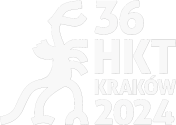Outline of the project
The geological history of Tethys Ocean is broadly established. Yet many details are still unknown and many major questions remain, related to geotectonics, paleogeography, paleoceanography and paleobiogeography.
Improved understanding of Mesozoic-Cenozoic ocean/climate history is based on accurate reconstruction of distribution of continents and ocean basins and on opening and closing of seaways along the Tethys. There is little or no agreement about the number or size of separate basins neither on their space-time relationships.
Moreover, there is no consensus on the number and location of former micro-continents and on their incorporation into the present-day Eurasian-Mountain Belt. Geologists studying individual parts of these belts have been educated within different geological systems and adhere to different geological paradigms. Correlation between Western and Eastern Tethys is difficult not only because of the large distances involved but also because they are separated by the area of the huge Himalayan collision within which much of the pre-Paleogene tectonostratigraphic information has been lost.
The aim of this IGCP project is to bring together geologists from the western and eastern parts of the former Tethys (Morocco/Iberia–SE Asia) for establishing a common framework and a common tectonostratigraphical concept (latest Paleozoic–Mesozoic with emphasis on Permian–Jurassic).


